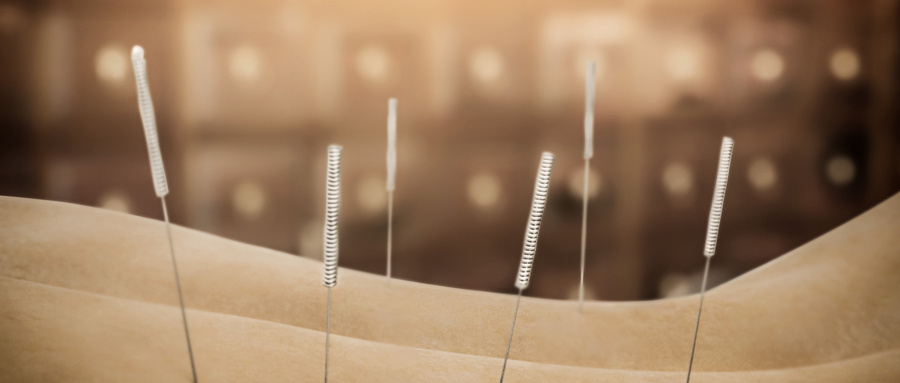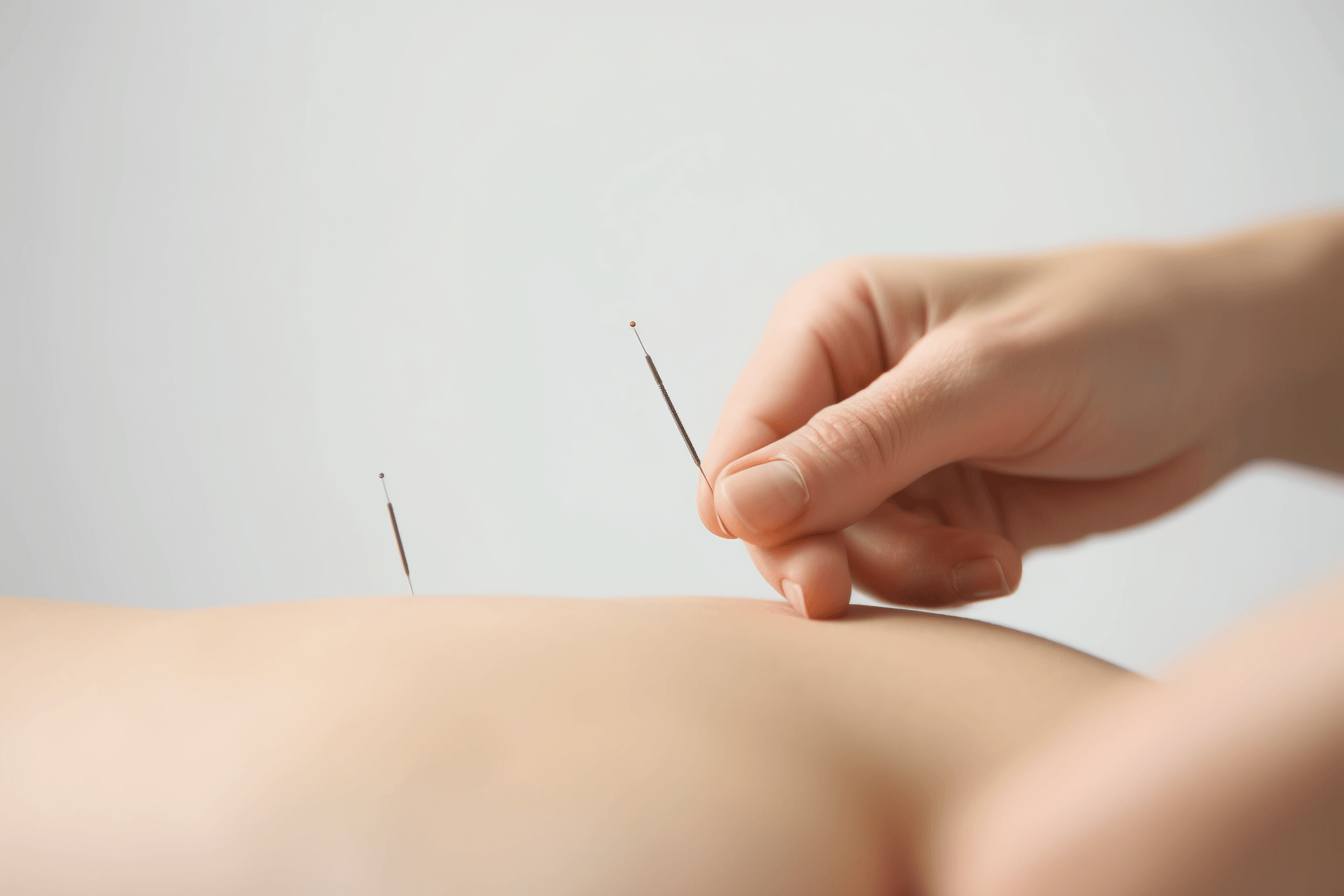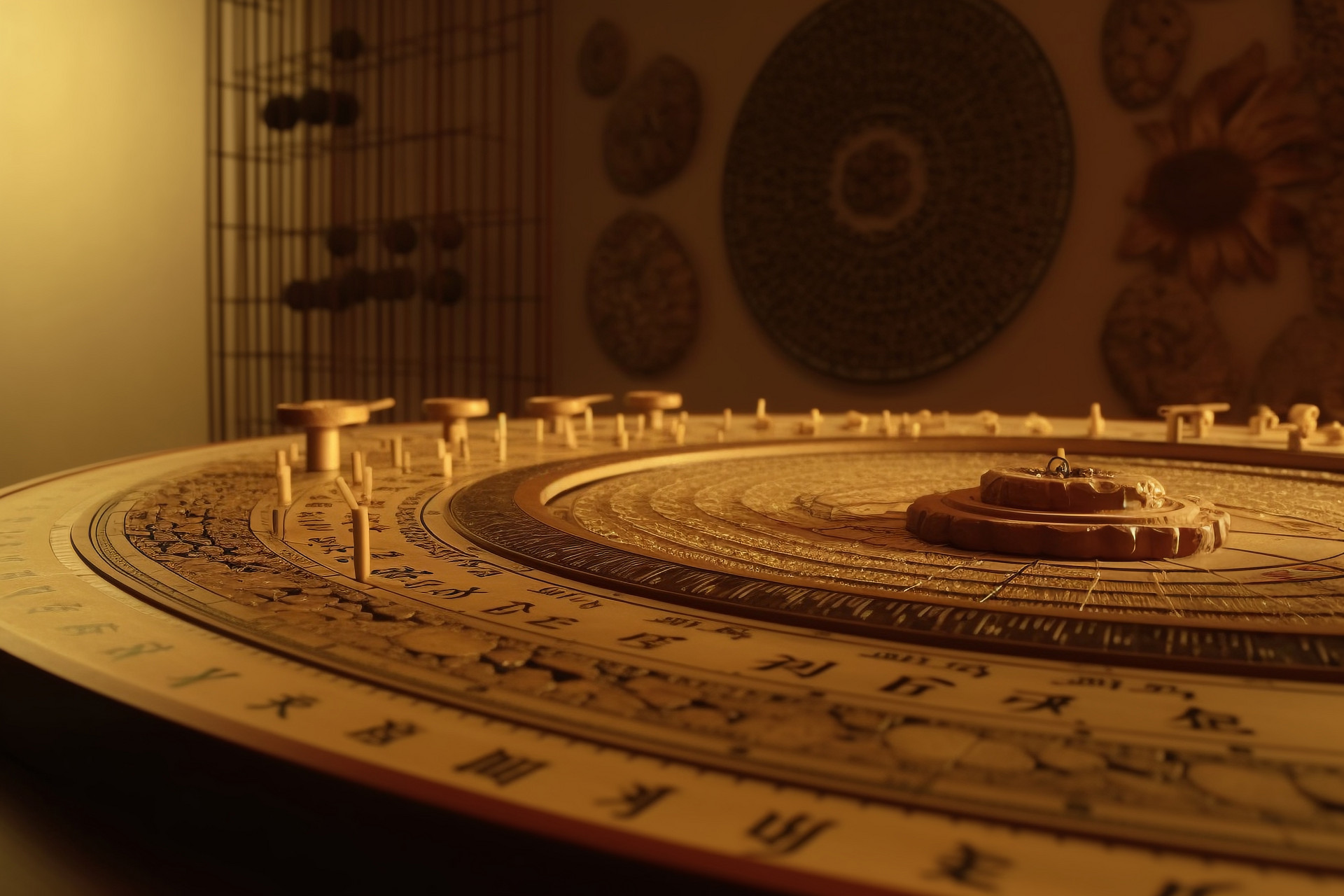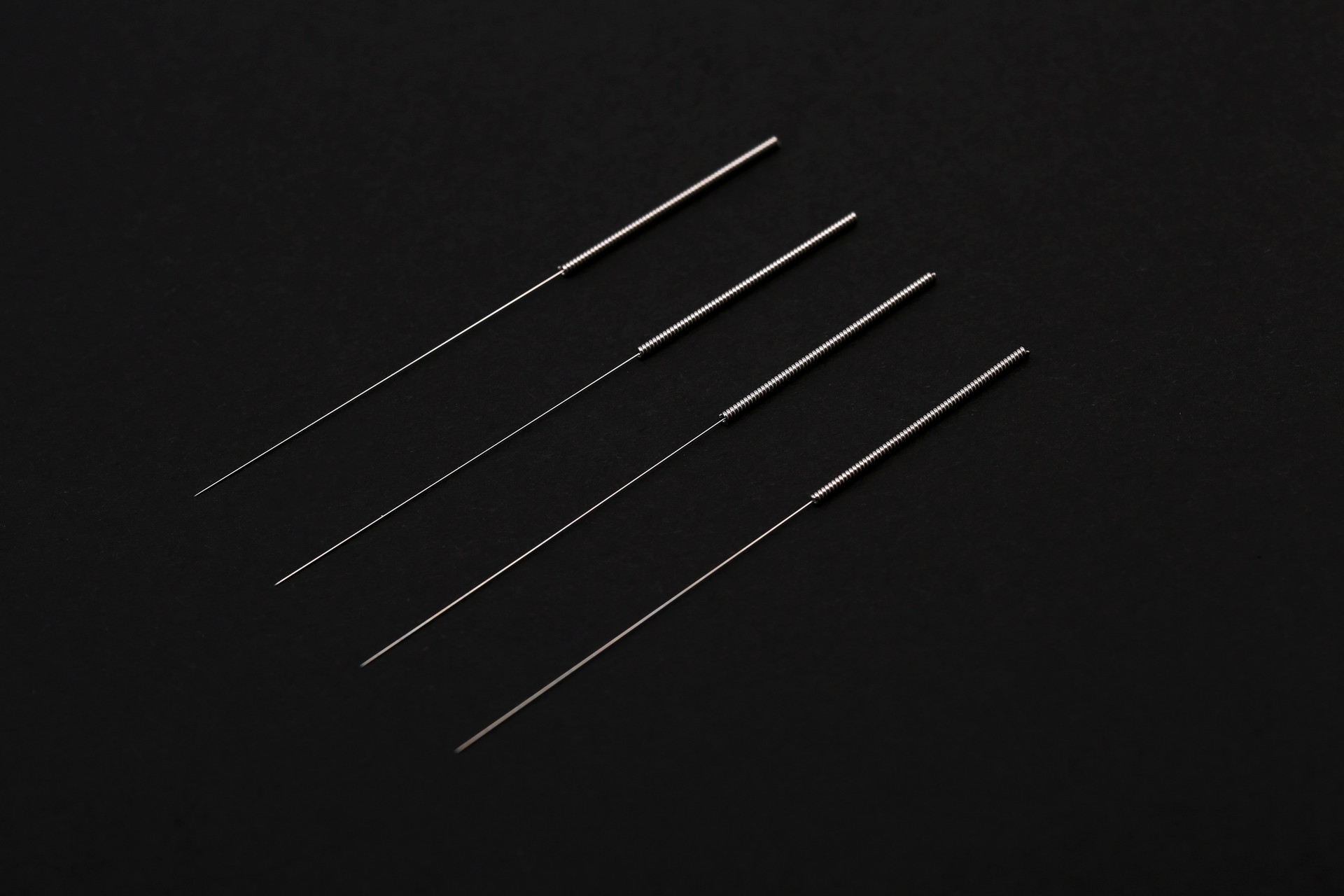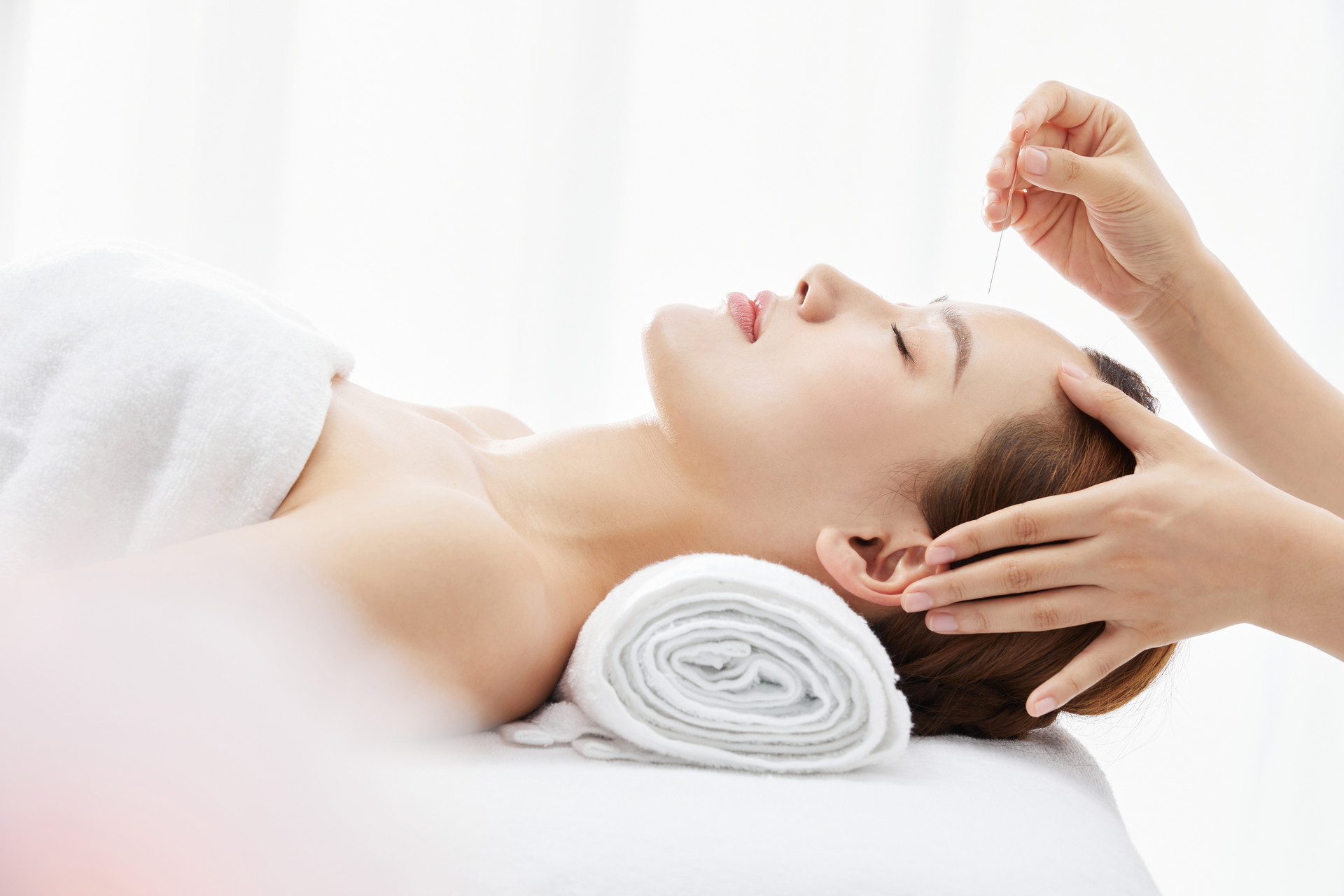Subcutaneous needle therapy is a new acupuncture method that uses disposable subcutaneous sheathed acupuncture needles (referred to as sheathed needles) to treat primarily pain-related diseases through superficial subcutaneous needling.
The theoretical basis of sheathed needle therapy
Sheathed needle therapy was developed based on traditional acupuncture therapy and modern wrist-ankle acupuncture therapy, originating from the classic Chinese medical text, "Huangdi Neijing".
The "Guan Zhen" chapter of the "Huangdi Neijing" describes shallow needling techniques such as floating needling (inserting the needle along the skin to treat coldness and muscle tightness), hair needling (piercing the skin to treat rheumatic pain), and straight needle needling (piercing the skin to treat coldness).
Sheathed needle therapy is similar to floating needling, as it involves needling in the subcutaneous superficial fascia layer.
From the theoretical basis to clinical practice, sheathed needle therapy relies on the meridian, cutaneous, and muscle-tendon theories of traditional Chinese acupuncture, as well as the theories of acupoints and Ashi points. It also relies on needling methods such as floating needling, along-skin needling, needle shaking, Qinglong swinging its tail, and Canggui probing, which provide support and guidance for needle insertion.
Characteristics of sheathed needle therapy
Sheathed needle therapy has several operational characteristics:
Needling around the pain point, not directly into it
In sheathed needle therapy, the needle is inserted not directly into the lesion site, but rather around the pain point along the meridian under the skin (the needle tip is aligned with the pain point but does not reach it, with a distance of 2-3 centimeters or even farther). The pain point serves as a target for needling.
Treatment of pain conditions using "myofascial release therapy" in Western medicine also avoids touching the pain point directly. Instead, pressure is applied around the pain point or on both sides of trigger points using the thumbs, and massage is performed along the distribution of muscle fibers towards the ends of the muscles on both sides.
Superficial subcutaneous needling
Sheathed needle therapy uses the needling technique described in the "Ling Shu, Guan Zhen" chapter of the "Huangdi Neijing", which involves needling superficially along the skin. The tissues involved are mainly the loose connective tissue, epidermis, dermis, and superficial fascia layer.
The "Huangdi Neijing" and modern acupuncture textbooks explicitly describe straight needling, oblique needling, and along-skin needling. There are also shallow needling methods that only stimulate the skin, such as intradermal needling and skin needling. These needling methods and tools do not require deep insertion into the muscle layer and have good therapeutic effects.
No need to obtain Qi
Wrist-ankle acupuncture is an effective method for treating pain conditions, based on meridian theory. Its characteristics include minimal acupuncture points, simple operation, and reliable and rapid efficacy. Sheathed needle therapy also does not require obtaining Qi. The so-called "no Qi obtained" actually belongs to a "hidden meridian induction phenomenon" (a term proposed during China's national meridian survey in the 1970s). Although the shallow needling itself may not be felt, the stimulation information can still travel along the meridians to the affected area, resulting in therapeutic effects, even immediate effects. As Dr. Sheng Shanben, Chief Physician at the Central Hospital of Hongkou District, Shanghai, commented on the predecessor of sheathed needle therapy, wrist-ankle acupuncture: "The so-called no needle sensation simply means that the stimulation is very slight... Although there is almost no sensation with shallow subcutaneous needling, it does not mean that there is no stimulation. Needling under the skin and inserting the needle one and a half inches (but the needle must be shaken) provides a lasting mild stimulation to the body. This stimulation can promote physiological activities within the body. No sensation does not mean no Qi obtained; it simply means that the obtained Qi is not manifested through needle sensation."
Special needling techniques
The swinging motion is a characteristic and important part of sheathed needle therapy. Although it is different from the insertion, twisting, and other single and multiple techniques of traditional acupuncture, it is similar to the shaking and Qinglong swinging its tail in ancient acupuncture techniques.
Long needle retention time
With the use of non-toxic soft sheathed needles, sheathed needle therapy allows for longer needle retention time. During the needle retention process, patients do not feel discomfort and may not even notice the presence of the needles, reducing psychological pressure and obstacles.
Safe with no side effects
Safety is the primary requirement and standard for any medical device. Sheathed needle therapy not only has no toxic side effects like drug treatments, but also does not harm any organs, major nerves, or blood vessels due to the needle only reaching the subcutaneous loose connective tissue. The sheathed tube left in the body is also non-toxic. It is very safe and easy for doctors to operate, and patients are willing to accept it. Problems such as needle retention, bending, and breakage that occur with traditional acupuncture are no longer present. In nearly 20 years of training and application, there have been no reported accidents.
Mechanism of action of sheathed needle therapy
Support from the cutaneous theory
Sheathed needle therapy targets the subcutaneous tissues and relies on the cutaneous theory of traditional Chinese acupuncture. Traditional therapies such as moxibustion, heat therapy, herbal patches, herbal fumigation and washing, and cupping all work through the warm stimulation of the skin. Skin needling, intradermal needling, prick needling, incision needling, as well as modern techniques like magnetic acupoint therapy, wrist-ankle acupuncture, sheathed needle therapy, laser acupoint irradiation, and ultraviolet irradiation are all based on the mechanism of treating diseases through the skin.
Involvement of the twelve meridians
The "Su Wen, Pi Bu Lun" chapter of the "Huangdi Neijing" states, "To know the skin, use the meridians as guidelines." This means that the meridians are the main focus when discussing the skin. Since the skin is guided by the meridians, sheathed needle therapy, which targets the skin, cannot avoid the involvement of the twelve meridians.
When using sheathed needle therapy to treat migraines or cervical spondylosis, in addition to stimulating the area around the cervical vertebrae 3-4 upwards, distant points on the lateral anterior edge or midline of the upper limbs are often used as stimulation points. These points correspond to the Hand Yangming Large Intestine Meridian or Hand Shaoyang Sanjiao Meridian.
When treating flank pain, in addition to stimulating the area between the ribs and the spine, stimulation points on the lateral side of the upper or lower limbs are often used. These points correspond to the Hand Shaoyang Sanjiao Meridian or Foot Shaoyang Gallbladder Meridian.
When treating lower back pain accompanied by sciatica, in addition to stimulating the local pain area, stimulation points on the posterior or lateral side of the lower limbs are often used. These points correspond to the Foot Taiyang Bladder Meridian or Foot Shaoyang Gallbladder Meridian.
Connection of the twelve meridian tendons
The twelve meridian tendons refer to the system in which the qi of the twelve meridians gathers in the muscles, bones, and joints. Sheathed needle therapy in the subcutaneous loose connective tissue and superficial fascia layer cannot be separated from the connection of the twelve meridian tendons.
The "Ling Shu, Jing Jin" chapter describes the treatment principle and acupoint selection method of "treating the meridian tendons by focusing on pain" for tendon-related diseases. The phrase "treating the meridian tendons by focusing on pain" refers to both the site of the disease and the acupoints used to stimulate it. It also implies the use of pain points as the basis for acupoint selection, such as selecting acupoints symmetrically on both sides of the pain point or corresponding acupoints in the upper and lower body.
All of these serve as the basis for selecting needle insertion points in sheathed needle therapy, based on the structure of the meridian tendons, pathological reactions and treatment principles, and acupoint selection methods, which are closely related to the search for tender points, determination of needle insertion points, and superficial needling of the skin and fascia.
The tender points, trigger points, and muscle-tendon trigger points searched for in sheathed needle therapy are referred to as "myofascial trigger points," which are tangible pathological reaction points in the subcutaneous soft tissues that can be felt by the patient and cause pain when pressed, similar to the concept of "tendon lesions" in traditional Chinese acupuncture.
In his comments on wrist-ankle acupuncture, Dr. Sheng Shanben of the Central Hospital of Hongkou District, Shanghai, said, "If wrist-ankle acupuncture can further integrate with the guidance principles of combined Chinese and Western medicine and the theory of meridians, it will achieve greater development." The same applies to sheathed needle therapy. Furthermore, it is even more beneficial for explaining the mechanism of action of sheathed needle therapy. This quote was actively referenced by Professor Zhang Xinshu, a leading figure in wrist-ankle acupuncture, in his book "Practical Wrist-Ankle Acupuncture," demonstrating the scientific attitude of a medical expert seeking truth.
Role of Ashi points
Ashi points are a category of acupoints in acupuncture theory. Ashi points, in fact, refer to points with no fixed location, no established names, and not included in the fourteen meridians. These points primarily target pathological reactions such as tender points, hypersensitive points, numbness points, nodules, and fibrous bands.
Ashi points are similar to the "tendon lesions" mentioned in traditional Chinese acupuncture, and they are the diagnostic targets for clinical applications of modern sheathed needle therapy. In sheathed needle therapy, if the needle insertion point in the pain area or distant area is not a specific acupoint along the meridian, it is actually applying the theory of "Ashi points" in acupuncture.
Combination of specific acupoints
When using sheathed needle therapy to treat rib pain, in addition to stimulating the local area of pain, stimulation points on the lateral side of the upper limbs, such as Hegu (LI4) acupoint or Zhigou (TE6) acupoint, are often used. Similarly, when treating cervical spondylosis, shoulder periarthritis, or cervical shoulder syndrome, stimulation points such as Jugu (LI16) acupoint of the Hand Yangming Large Intestine Meridian and Jianjing (GB21) acupoint of the Foot Shaoyang Sanjiao Meridian are used.
Use of shaking needling technique
The "shaking technique" originates from the "Ling Shu, Guan Neng" chapter of the "Huangdi Neijing": "Shake the needle at its acupoint." During the Jin and Yuan dynasties, Dou Hanqing's "Zhen Jing Zhi Nan" listed it as one of the fourteen needling techniques, and Yang Jizhou of the Ming Dynasty included it as one of the eight lower needle techniques in "Zhen Jiu Da Cheng". Acupuncture expert Wang Ji stated in "Zhen Jiu Wen Dui": "When withdrawing the needle, it must be shaken and moved. The 'Qinglong swinging its tail' technique also uses shaking, hence the saying 'shaking to promote Qi movement'."
The shaking technique can be divided into "straight shaking" and "lying shaking." Straight shaking involves inserting the needle straight and shaking it horizontally to enhance the needle sensation. "Lying shaking" involves subcutaneous needling and shaking the needle horizontally like a "rowing oar" to promote Qi movement.
Sheathed needle therapy's "shaking technique" has a Qi-promoting effect. This Qi force, like the swinging of a fish's tail that propels the fish forward in water or the shaking of an oar that propels a small boat forward, can reach the pain site (tender point, trigger point) pointed by the needle tip and play a therapeutic role in dispersing meridians, promoting blood circulation, reducing swelling, and relieving pain.
In sheathed needle therapy, it is emphasized that "the needle insertion site should be on the same side as the lesion in the joint, rather than across the joint, as it would affect the treatment effect." This itself reflects the fact that the so-called "shaking" in sheathed needle therapy has a Qi-promoting effect.
Sheathed needle therapy based on traditional acupuncture
In summary, sheathed needle therapy is closely related to traditional Chinese acupuncture rather than being unrelated to it. On the contrary, it has a close connection to traditional acupuncture: firstly, sheathed needle therapy originated from the "floating needling" method in the "Huangdi Neijing"; secondly, wrist-ankle acupuncture also originated from traditional acupuncture; thirdly, sheathed needle therapy developed on the basis of wrist-ankle acupuncture, making it a divergence from the same source and a continuation of the same tradition. Both the theoretical foundation and clinical practice of sheathed needle therapy remain within the theoretical system and practice of traditional acupuncture.
Sheathed needle therapy is an acupuncture technique developed based on the "Huangdi Neijing" and traditional acupuncture. It is closely related to and inseparable from traditional Chinese acupuncture, and it is an innovation based on traditional acupuncture. Sheathed needle therapy mainly involves needling along the subcutaneous meridians, with the needle tip pointing to the affected area, applying shaking techniques and retaining the needle to stimulate the meridian Qi in the skin. This process continuously enhances and strengthens the body's Qi and blood circulation, promotes meridian flow, activates blood circulation, reduces swelling and relieves pain, accelerates the absorption of inflammation in lesions, promotes metabolism, corrects imbalances of Qi and blood, and ultimately achieves a balanced and harmonious state in the body, curing diseases.
Currently, multi-functional subcutaneous sheathed acupuncture needles have been listed as a high-tech suitable technology promotion project by the Traditional Chinese Medicine International Exchange Center of the State Administration of Traditional Chinese Medicine, indicating a broad development prospects. It is our responsibility and task to promote and develop sheathed needle therapy, conduct in-depth research on related mechanisms such as the non-"pain-based" issue and the non-Qi-obtained issue, further expand its scope of application, improve the efficacy of indications, and consolidate the long-term therapeutic effects.


